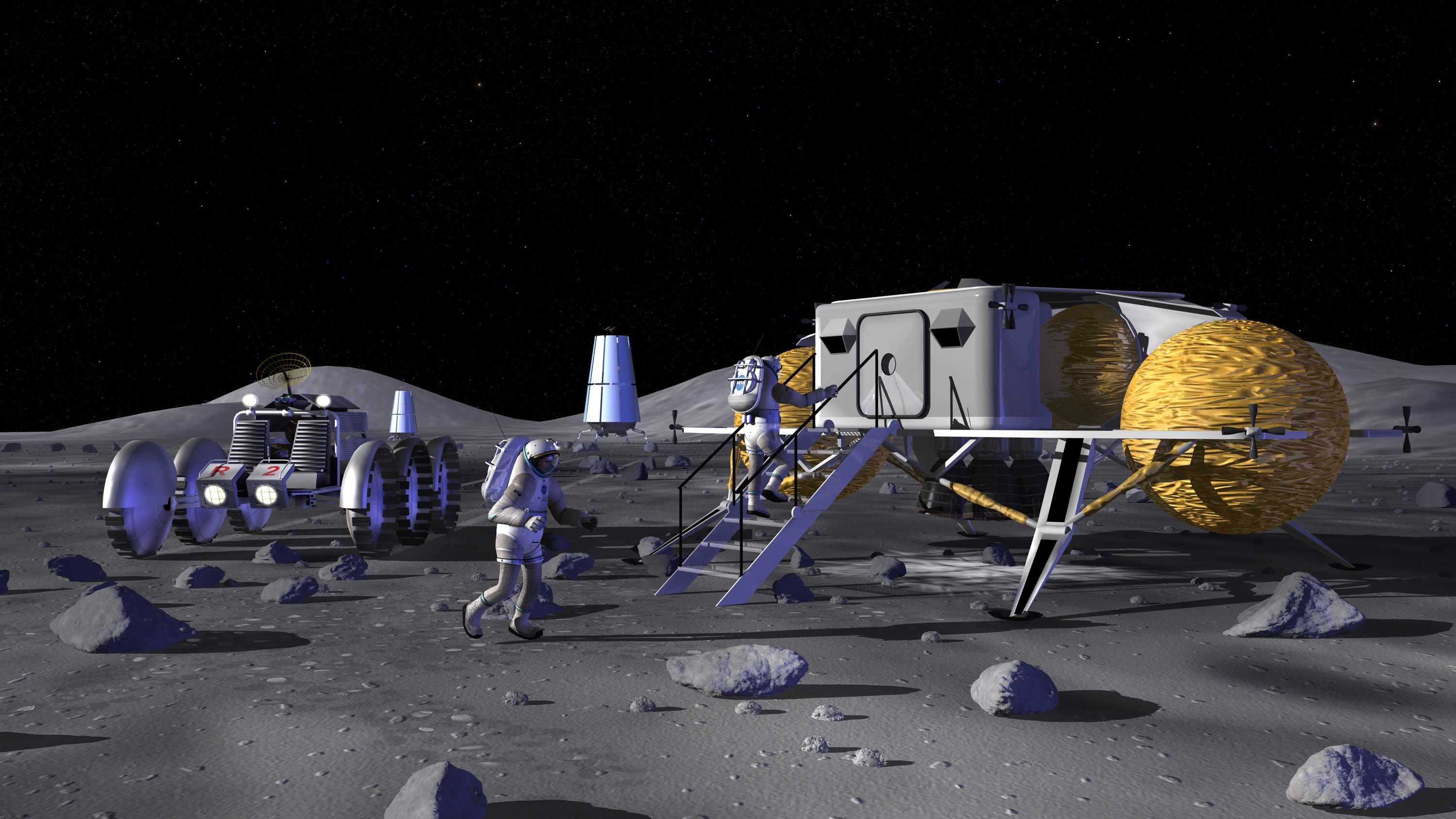Permanent Moon Base
A lunar outpost is a concept of a permanent or semi-permanent presence of humans on the Moon by the United States space administration NASA. NASA has requested an increase in the 2020 budget of $1.6 billion, in order to make another crewed mission to the Moon by 2024, followed by a sustained presence on the Moon by 2028.
The concept of establishing a long-term human presence on the Moon can be traced back to the late 1950s. The Lunex Project, conceptualized in 1958, was a US Air Force plan to construct an underground Air Force Base on the Moon. On 8 June 1959, the US Army's Ballistic Missile Agency (ABMA) organized a task force called Project Horizon to assess the feasibility of constructing a military base on the Moon.
Project Horizon proposed using a series of Saturn launches to pre-construct an outpost while in Earth orbit, with the intention of subsequently delivering and landing the completed assembly on the Moon. Additional Saturn launches each month would then ship supplies to the inhabitants.
The Artemis program is a planned crewed spaceflight program carried out predominately by NASA, U.S. commercial spaceflight companies, and international partners such as the European Space Agency (ESA), JAXA, and the Canadian Space Agency (CSA) with the goal of landing "the first woman and the next man" on the Moon, specifically at the lunar south pole region by 2024. NASA sees Artemis as the next step towards the long-term goal of establishing a sustainable presence on the Moon, laying the foundation for private companies to build a lunar economy, and eventually sending humans to Mars. One primary target is Shackleton crater. In 2028 NASA plans on launching the Lunar Surface Asset, a small habitat to the surface of the Moon on either an SLS Block 1B or through an Artemis Support Mission on a commercial launcher. This would be the first crewed lunar base.

